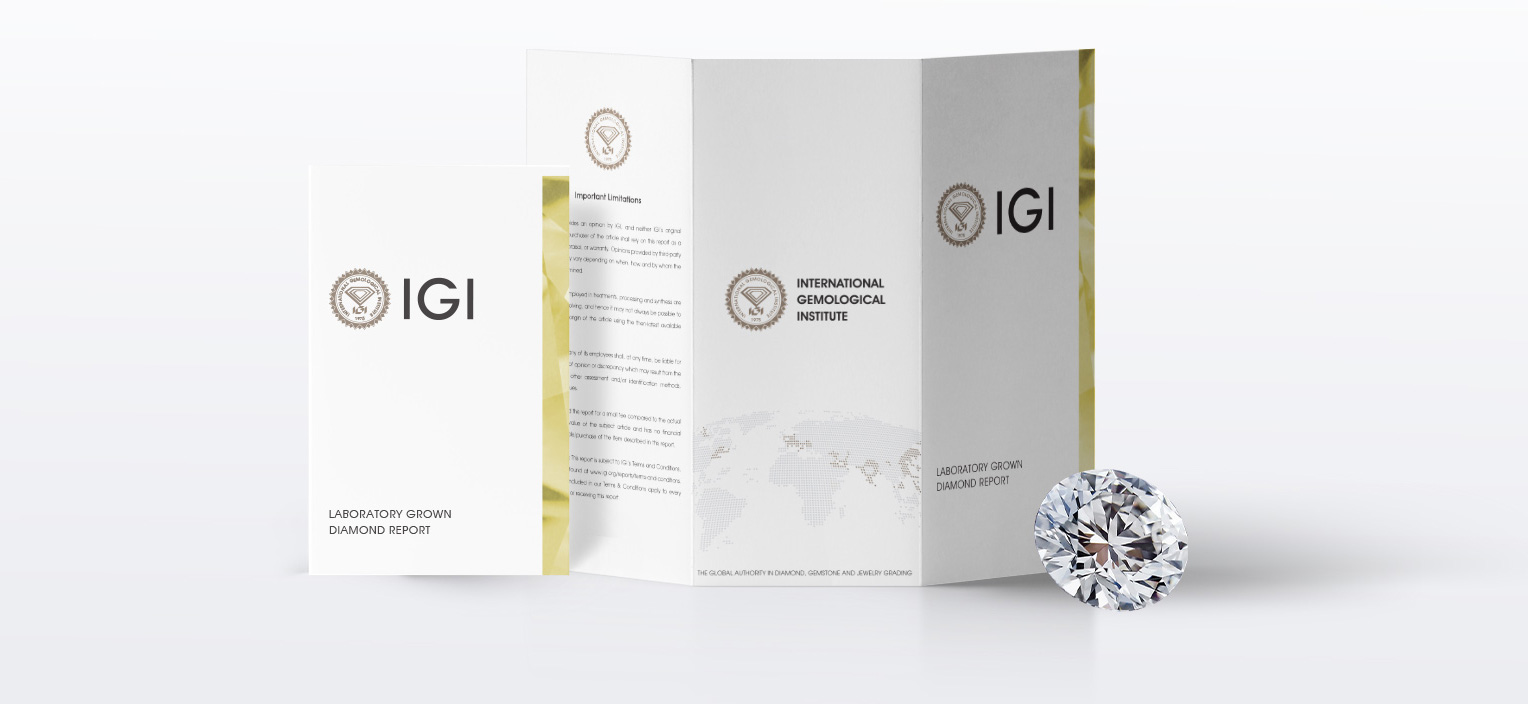Aug 30th 2021
What are Lab-Grown Diamonds and How are They Created?
Lab-grown diamonds can cost 30-40% less than their natural diamond counterpart, but have identical chemical, optical and physical properties.
Defining a Diamond
The Federal Trade Commission (FTC) defines a diamond as pure crystallized carbon in the isometric cubic system. Scientists use cutting-edge technology to create lab-grown diamonds by isolating carbon and layering it onto itself, making them virtually indistinguishable from mined diamonds. Lab-grown diamonds are identical to diamonds found in the earth in every way as they share the same qualities and characteristics like chemical composition, crystalline structure, refractive index, dispersion, hardness and density.
It’s also important to note that there is a huge difference between lab-grown diamonds and diamond simulants, like moissanite and cubic zirconia, as these are not made of carbon and only possess similar qualities to diamonds.
How are Lab Grown Diamonds Made?
Lab-grown diamonds, also known as synthetic diamonds, man-made diamonds, engineered diamonds, or cultured diamonds, were first produced in the 1950’s, but were only suitable for industrial use, and not refined for gem-quality until 1971. It wasn’t until the mid-2010’s that lab-grown diamonds entered the commercial gem and jewelry market.
Scientists use two methods to produce lab-grown diamonds; High-Pressure High-Heat (HPHT) and Chemical Vapor Deposition (CVD). Growing diamonds by either method typically requires less than a month. It is important however that the process is not rushed, or the crystal will fracture.
Lab-grown CVD rough diamond (left), laboratory-grown HPHT rough diamond (middle), natural rough diamond (right) - Image Courtesy of GIA
High-Pressure High-Heat (HPHT)
High-Pressure High-Heat (HPHT) mimics the high pressure and high temperature conditions that create diamonds deep beneath the earth’s surface.
- A small diamond seed is placed into a piece of carbon, within a specifically designed growth chamber
- The growth chamber is pressurized to approximately 1.5 million pounds per square inch, and is exposed to temperatures over 2,700 Fahrenheit
- The extreme pressure and heat cause the carbon atoms to precipitate on the small diamond seed crystal, and a synthetic diamond begins to grow around it
- The newly formed diamond is carefully cooled and then polished by a diamond cutter
Chemical Vapor Deposition (CVD)
Chemical Vapor Deposition (CVD) subjects a hydrocarbon gas mixture to moderate pressures and temperatures within a vacuum chamber. Most CVD-grown diamonds require additional treatments like heat or irradiation to enhance or change their colors after the growth process.
- A small diamond seed is placed inside a sealed chamber
- The chamber is heated to over 1,400 Fahrenheit and filled with carbon-containing gases (typically methane and hydrogen)
- A microwave beam breaks down the molecular bond of the gas and pure carbon begins to stick to the seed, forming a new diamond
- Diamonds are removed every few days to have the top surface polished to remove any non-diamond carbon before being put back in to grow
- Once the crystals are removed, they are cut and polished into the final product
How are they Differentiated?
Lab-grown diamonds can appear exactly the same as natural diamonds to the untrained eye. They have very subtle differences that can only be detected by gemologists using sophisticated equipment. Like earth-mined diamonds, lab-grown diamonds also undergo vigorous grading for each of the 4 C’s and verification that the product was, in fact grown in a lab.
The IGI Laboratory Grown Diamond Report - Image Courtesy of IGI
Do Lab-Grown Diamonds Test as Real Diamonds?
Yes! Because lab-grown diamonds have the exact same chemical composition as earth-mined diamonds, they test positive on a diamond tester. Although, because of the intense conditions involved in the HPHT method, some HPHT lab-grown diamonds can contain impurities (unnoticeable to the naked eye) which can cause a lab-grown diamond to test as a moissanite or non-diamond.
With the same beautiful dazzle as mined diamonds at a fraction of the cost, lab-grown diamonds are becoming a popular alternative, especially with the world’s biggest jeweler, Pandora announcing it will drop mined diamonds and only sell lab-grown ones. Like all stones, lab-grown diamonds have their benefits and drawbacks, so make sure you weigh your options when choosing which stone is right for you!
Have a question? We can help!
Gage Diamonds is Chicago's premier jewelry showroom and online retailer of engagement rings, wedding bands, and fine jewelry. We offer a selection of dazzling handpicked diamonds in a variety of shapes, including oval, pear, marquise, emerald and princess.
We’re committed to helping you find the ring of your dreams. For inspiration, browse our selection of engagement rings or set up an appointment with a member of our trusted staff at our in-person showroom.
We offer no-credit-needed financing – feel free to apply and get your approval within 24 hours!
Pay over time, because love shouldn’t wait.
 VISIT OUR SHOWROOM
VISIT OUR SHOWROOM Reviews on Google!
Reviews on Google!







